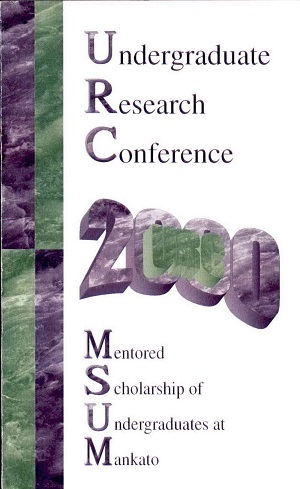Thematic Mapper Analyses of Eutrophic Lakes in Southern Minnesota
Location
CSU
Student's Major
Computer Information Science
Student's College
Science, Engineering and Technology
Mentor's Name
Bryce Hoppie
Mentor's Department
Chemistry and Geology
Mentor's College
Science, Engineering and Technology
Description
Eutrophication in southern Minnesota lakes often leads to the overall degradation of water quality. The current method of assessing eutrophication in lakes is to perform tests of water quality at relatively few sites in the lake. In many cases testing only a few is not adequate. Satellite images can better assess eutrophication in lakes by observing and comparing digital images over the entire lake through seasonal and yearly periods. Our study used public domain Thematic Mapper (TM) images of southern Minnesota from the Minnesota Department of Natural Resources. Analyses of the images show the development of eutrophication in the visible and infrared spectrums. Eutrophication is apparent between images taken during the spring and summer seasons and among neighboring lakes during the same season. These preliminary results show that this method may be useful in quantifying the development of eutrophication in many fresh-water lakes. We will next compare our results with those from a traditional survey to assess their differences.
Thematic Mapper Analyses of Eutrophic Lakes in Southern Minnesota
CSU
Eutrophication in southern Minnesota lakes often leads to the overall degradation of water quality. The current method of assessing eutrophication in lakes is to perform tests of water quality at relatively few sites in the lake. In many cases testing only a few is not adequate. Satellite images can better assess eutrophication in lakes by observing and comparing digital images over the entire lake through seasonal and yearly periods. Our study used public domain Thematic Mapper (TM) images of southern Minnesota from the Minnesota Department of Natural Resources. Analyses of the images show the development of eutrophication in the visible and infrared spectrums. Eutrophication is apparent between images taken during the spring and summer seasons and among neighboring lakes during the same season. These preliminary results show that this method may be useful in quantifying the development of eutrophication in many fresh-water lakes. We will next compare our results with those from a traditional survey to assess their differences.



